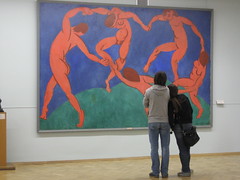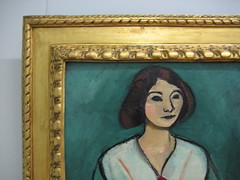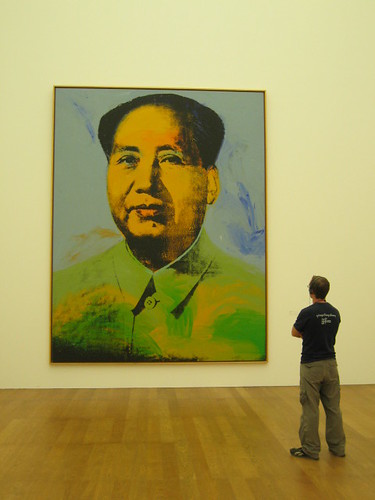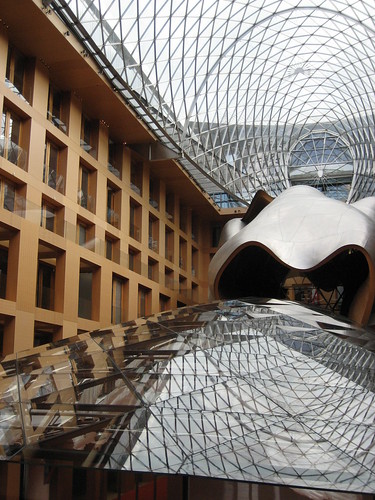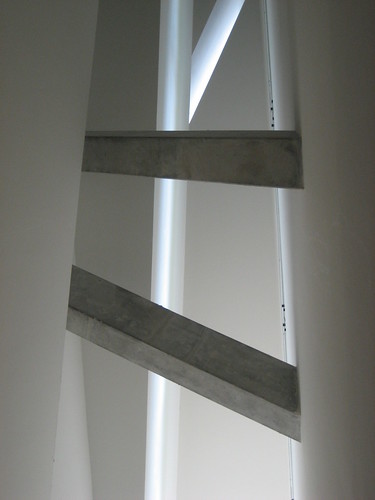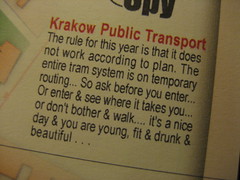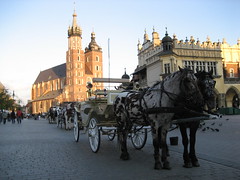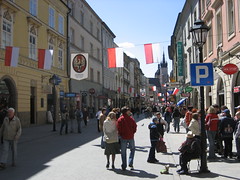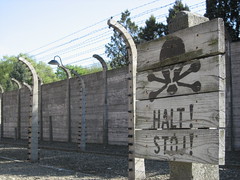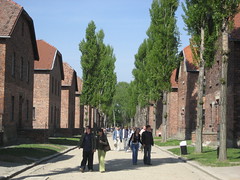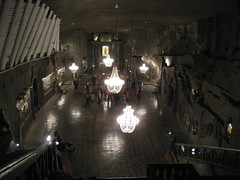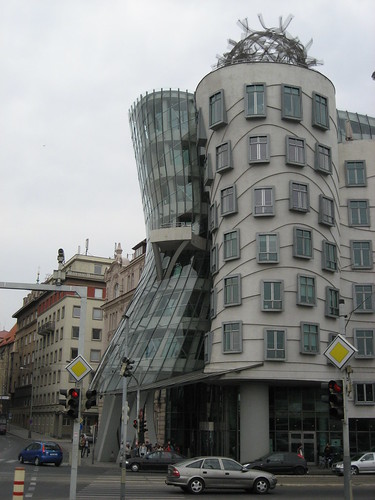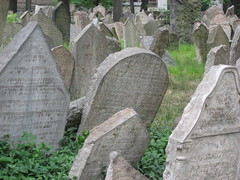Europe, at Last: Part II
After our trip through Prague's Jewish Quarter, we left the city aboard a series of buses and local commuter trains taking us to the small southern Czech town of Cesky Krumlov. The word Cesky — meaning Czech — is a leftover from the days of Czechoslovakia, when towns identified themselves as Czech or Slovak as a part of their name. After the countries became independent, the names stuck, so many towns in the Czech Republic carry the Cesky name.*
--
* Note: I have no facts to back this up, but it sounded right in my head. Maybe it's like San Diego, where nobody knows what it means. What's that? Saint Diego? No, no. Agree to disagree.¹
¹ Mom: this is a reference to a movie you haven't seen, or, more likely, a movie you saw and subsequently forgot about five seconds after you walked out of the theater. Okay, back to the blog.
--
We arrived at night and strolled across the cobblestone streets before checking into our incredible apartment overlooking the Vlatva River, which winds hairpin turns through town, dominated by the enormous 13th century castle above town.
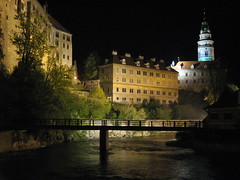
Our first day, we borrowed a few audioguides from the tourist office, and set off on a great tour of the city, which was founded back in 1302. We had a great time wandering amidst the old buildings, learning about the history of Krumlov and the people who live there, soaking in the beauty of the town. The town is full of cool little surprises that we would have never noticed without the guides, like family crests which have graced buildings for hundreds of years, or trompe-l'œil paintings which blend right into the architecture. Like Prague, Krumlov was left virtually untouched by the bombs of World War II, and many of the historic buildings have been renovated and restored thanks to extra income from the recent tourist boom.
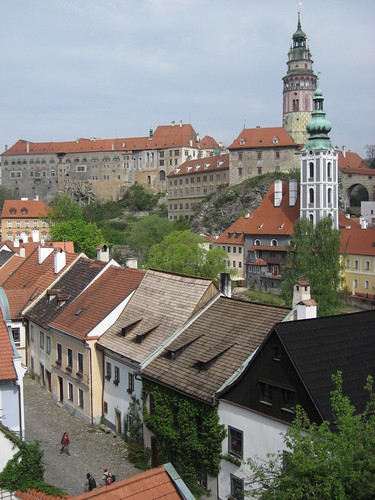
The next day we went on a tour of the Cesky Krumlov's Eggenberg Brewery, which was led by a local woman who had lived in the little town her whole life. Unlike the borderline-propaganda Coors Tour offered in my hometown, the Eggenberg tour was scrappy, gritty, and honest about their beer. Our guide gave us an up-close look at the vats, tanks, and tunnels where all the beer is made, and like any brewery tour, the best part is the end. Eggenberg's was no let down — their dark beer is definitely one of the best beers I've ever had.
While my mom was out shopping, my dad and I made a stop by the progressive Egon Schiele Center, which houses some of the artist's work, along with special exhibitions. The famed painter Egon Schiele lived in Cesky Krumlov for more than a decade, but was ousted from town for being too weird. During his very short career before his death at age 28 of the Spanish Flu, he generally painted either scenes from quaint Cesky Krumlov, or disturbing and overtly sexual paintings of himself and his many girlfriends. His paintings were great in real life — a lot of the subtlety, texture, and detail gets lost when they are reproduced in books.
From Cesky Krumlov, we took a shuttle across the border into Austria to the railway hub of Linz, where we caught a train over to Salzburg, a mid-sized town which is famous for being the home of both Mozart and The Sound of Music. Since I'm an enthusiast of neither, I decided to opt out and instead climb up onto the town's plateau for a look at their new contemporary art museum, the Muzeum der Moderne. The museum has no permanent collection and featured work by only three artists. On display were huge prints by photographer Joel Meyerowitz of post-9/11 shots of Ground Zero in New York, who was granted access onto the site to document the process of clearing the wreckage, now published in a book called Aftermath. I especially enjoyed the carved wood sculptures on display by German artist Stephan Balkenhol.
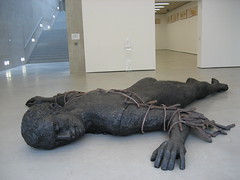
We only stayed in Salzburg for one night, in a hotel that is almost 700 years old, which was a really fun experience. Over my travels, I can't get over how much history lies within each European town compared to the relatively short history of America. Being surrounded by thousands of years of layered history must provide European people with an enhanced sense of cultural tradition and vastly different understanding of the scope and scale of the world than we've got back in the States.
We spent the rest of our time in Salzburg braving the rain, hiking around on the wooded hill above town, and exploring the large town fort, which was never successfully attacked in its long history.
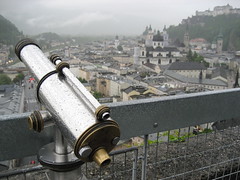
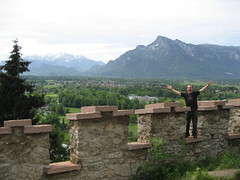
Our next stop was off to the little town of Hallstat, perched on the edge of a beautiful lake and surrounded by rolling mountains on all sides. We took the ferry from the train station, and I couldn't believe my eyes. Hallstat is surely one of the prettiest places on earth, and as we explored the town, I couldn't get over how absurdly beautiful the place was. And for such a little town, Hallstat has an staggeringly long history — the little salt-mining village was founded before Rome. Yes, that Rome.

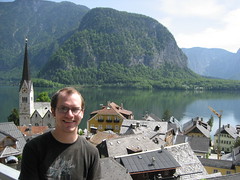
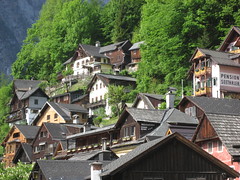
One of the town's most interesting places in town is Hallstat's graveyard, where townspeople still come to honor the dead with candles and flowers each night. Since the town has so little land available, the bones are removed from the graves a decade after the person has died and kept inside an ossuary. Each family hand-paints the deceased person's name on their skull, along with symbols which stand for things like love, virtue, and honor. I found the 300-year old tradition really fascinating, but is rapidly dying out as more and more people in Hallstat choose to be cremated. Still, you can stop by the small ossuary for a look at more than 1200 skulls and bones of all the old townspeople.

We left Hallstat and hopped aboard a quick train to the nearby town of Melk, where we rented bikes and spent a few hours cruising along the Danube River. Along the river, there are hundreds of miles of bike trails which wind from town to town. Someday, I'd love to return to Austria and do a long bike trip stopping in towns along the way, but for now I settled on a nice ride with my parents to the next town over to grab a beer and watch the sunset over the river.
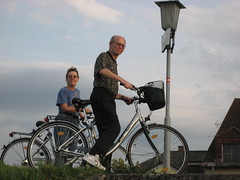
The next morning, we climbed up to the butter yellow and very baroque Melk Abbey on the hill just over our hotel. For decades, the gargantuan abbey sat in disrepair, but was recently renovated thanks to the sale of the abbey's original copy of the Gutenberg Bible (Johannes, not Steve) to Yale University for what was surely a massive sum of money. Part of the abbey is now a museum with oddly-designed exhibits documenting the changing face of faith, but I especially enjoyed the ancient leatherbound books in the library, the monumentally gaudy baroque church, and the sweeping views over the pleasant little town.

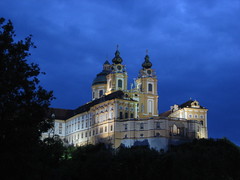
As we left Melk, we again climbed aboard Austria's truly impressive network of trains, this time headed for the country's capital of Vienna, or as the locals call it, Wein.
In my mind, Vienna has always been synonymous with boring music, stuffy old people, and formal gardens. As we arrived, I was surprised to find a really thriving and active city center full of arty hipsters, cheap food shops, and more contemporary art museums than you could shake a stick at. Many of the city's museums are grouped around an incredible courtyard full of amazingly cool lawn furniture, jammed with people laying around, drinking booze, and enjoying the warm spring weather. Since the museums protect the square from any traffic noise, the space was like a massive outdoor living room, and it will definitely go down as one of the best public spaces I've seen on the trip. I seriously couldn't get enough of this outdoor furniture — if only every city had as nice of a place to come and hang out.

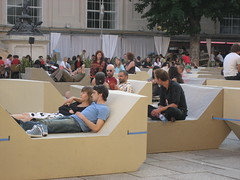
Our one and only night in Vienna was spent just outside the city center, taking part in a long-held local tradition of sipping wine in outdoor wine bars. And as the old saying goes, "when in Wein, do as the Weiners do." Maybe that's why they picked Rome for that saying. Anyway, Vienna has a few dozen wine gardens, many of which are still functional vineyards, making small batches of homemade wine. Thanks to an ancient loophole in the law which allowing vineyards to sell wine tax-free on their property, wine bars sprouted up, and an excellent tradition was born. We had a very memorable night vineyard-hopping for a few hours, trying a few different wines and getting some delicious Viennese grub along the way.
Squeezing in as much as possible into our visit, my parents and I split up for our morning in Vienna before our flight to Paris. They went off to see some fancy crown jewels or something, and I went to three museums. First, the Leopold Museum, which houses mostly Austrian 20th century art including a large collection of delightfully disturbing work by Egon Schiele, and a whole room dedicated to the beautiful work of design bad-ass Kolomon Moser. Nearby the Leopold Museum was a small graphic design museum — the dim lighting and lack of staff gave me the impression I was the only person nerdy enough to actually go there. After checking out the nice little collection of old posters and products, I was off down the street to the gold domed Secession Museum.
The Vienna Secession was a movement in the art, design, and architecture world in the early 1900s whose small gang of members — led by painter and designer Gustav Klimt — devoutly believed in the power of then-contemporary art to change the lives and minds of regular people. They built the Secession building as a monument to their cause, and held regular exhibitions there as they developed and furthered what is now known as the Art Noveau style. In order to keep the spirit of the Secession alive, most of the museum is still dedicated to contemporary art, but the parts that interested me the most were the ones about the Vienna Secession itself. The two highlights were the gorgeous original copies of the Secession's self-published magazine Ver Sacrum, and Gustav Klimt's Beethoven Frieze, a large-scale mural painted in 1902 for an exhibition on the composer. The Seccession building itself was also a highlight:

We left Vienna and spent all of last week in Paris, which will be covered in my next update, along with London where I am now. My parents headed back to Denver a few days ago, so I'm back to frugal living and nights spent hearing other people snore at crowded hostels. Another change of pace is on its way: I'm headed to Istanbul on the 29th where I'll start a month-long journey through Turkey. Also, I just bought my tickets from London to New York, so I officially have a date when I'm headed back to the home of the brave, land of the free: September 4th!
Thanks for reading everyone. I hope you are all well.
Ryan!
Photos updated: Prague, Cesky Krumlov, Salzburg, Hallstat, Melk, Vienna, Paris, and some of London
